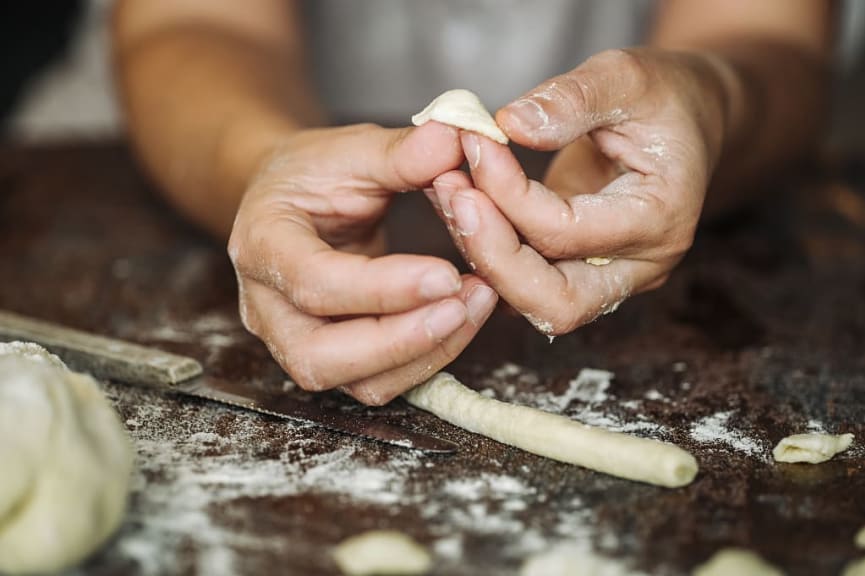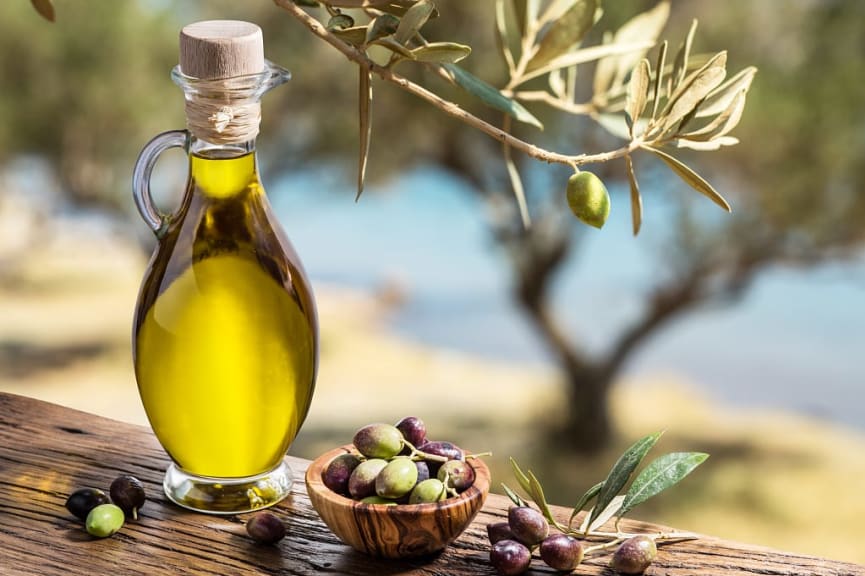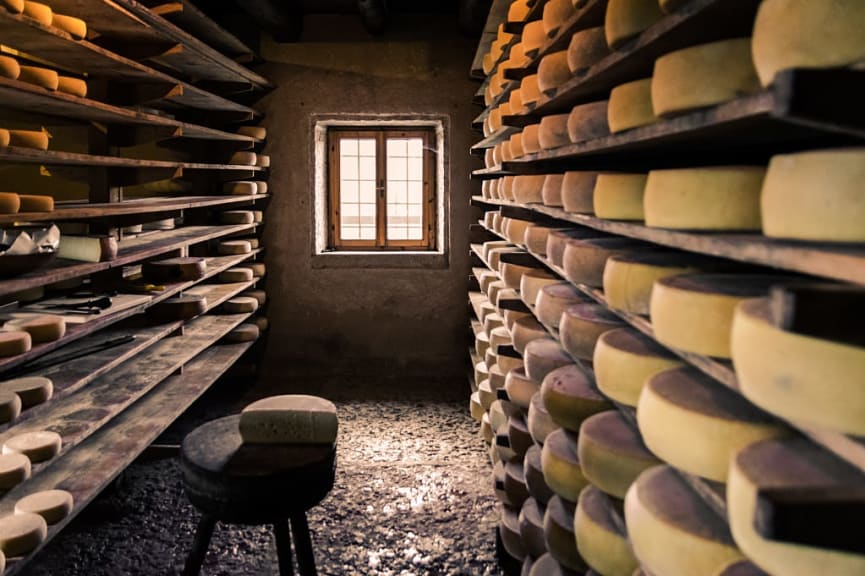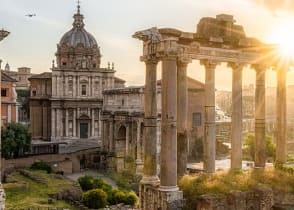9 Best Foods and Drinks to Try in Italy on Vacation

Tuscan wild boar ragu with pappardelle pasta
Italian cuisine is famous throughout the world, and our list of the best food and drink to try in Italy on your vacation focuses on the famous dishes, seasonal flavors, and delicious ingredients that exemplify Italian culture and cuisine.
From a private couple’s cooking class to a family-friendly gelato course, a senior’s wine-tasting tour to a pizza-making class with friends, this list helps you explore where and how to sample traditional dishes.
Whether interested in the history of pizza or eager to sample wines from a celebrated vineyard, a customized Italy trip designed by a destination specialist allows you to experience Italian gastronomy your way.
1. Pizza

Brick oven Neapolitan pizza in Naples
Pizza has become a staple in Italy. It was in Naples on June 11, 1889, that the Neapolitan chef Raffaele Esposito created the Pizza Margherita. The first of its type, the famous combination of tomatoes, mozzarella, and basil honored the Queen consort of Italy, Margherita of Savoy. Pizza remained relatively unknown beyond the borders of Naples until the 1940s.
Before modern pizza was invented, similar forms of flatbread existed around the Italian Peninsula, with references dating back to the 10th century. These everyday ingredients come together to create one of the world’s most popular foods, with rich, sweet, and complex tastes.
There is no shortage of restaurants, cafés, or hidden street vendors serving unforgettable types of pizza specific to the local, seasonal flavors. The best pizzas across the country remain authentic to the regional delicacies and traditions, whether in Naples or Sicily, Milan or Rome. You can easily enjoy pizza around the country, whether on a walking tour designed to sample various options, with a cooking class focused on making pizza, or with a sampling tour of the very best in each city.
Where to Visit for Pizza: Naples • Milan • Florence • Caiazzo • Sicily
2. Pasta

Making orecchiette in Southern Italy cooking class
The name “pasta” references the word paste, meaning the dough, as opposed to maccheroni, meaning the noodle. Italy’s warm climate has always allowed for fresh vegetables and herbs, and as the tomato entered the culinary scene, it became one of the noodle’s most favorite compliments, especially south of Rome.
Archaeologists and anthropologists point towards Asia as pasta’s origin, but have found evidence of pasta types existing on the Italian Peninsula long before Marco Polo traveled eastward in the 13th century. Once it reached the Mediterranean, making pasta was refined and became rooted in Italian culture.
Rather than stumbling on one of the traditional pasta dishes by happenstance, you can get hands-on experience in a cooking class that will teach you how to make authentic noodles and dishes specific to the region you are visiting, which you can then take home to sample over and over again.
Where to Visit for Pasta: Verona • Tuscany • Rome • Bologna • Genoa • Naples
3. Gelato

Selection of gourmet gelato
It is impossible to talk about Italy’s famous culinary traditions without mentioning one of the most famous delicacies, gelato. It may be considered the best food in Italy. This beloved form of ice cream dates back thousands of years, beginning around 3,000 BC, when Asian cultures discovered that crushed ice and flavorings made for pleasurable treats. The technique arrived in the Italian Peninsula in Roman times, with the ritual of topping with honey the ice found on the peaks of Mounts Etna and Vesuvius.
The Medici family played an essential role in the rise of gelato during the Renaissance when they sponsored a contest in search of a great frozen dessert. A chicken farmer who loved to cook competed with a dessert of fruit juice and ice, winning the award. Catherine de Medici brought the former chicken farmer to France to make his specialty at her wedding. By the late 1500s, the Medici family brought in for a feast artist Bernardo Buontalenti, who created the creamy frozen dessert we call gelato.
The traditional technique for making gelato calls for less butterfat than ice cream, and far less air, which creates a more intense flavor. It is also made with quality ingredients and served at a warmer temperature for a creamier texture and a more satisfying taste. It is easy to sample gelato everywhere in Italy, but you can truly savor it by exploring further. Include a workshop and cooking class, or sample the best offerings across the country with a guided tour in cities with some of the finest available.
Where to Visit for Gelato: Bologna • Florence • Turin • Naples • Milan • Modena
4. Balsamic Vinegar

Balsamic vinegar in Modena
Balsamic vinegar is a quintessential Italian condiment, renowned for its rich flavor and versatility. Originating from the Emilia-Romagna region, traditional balsamic vinegar is produced through a meticulous process that involves the fermentation of grape must. This process can take several years, resulting in a thick, dark syrup with complex flavors.
Balsamic vinegar is incredibly versatile and can be used in salads, marinades, glazes, and deserts. In Italy, balsamic vinegar is more than just a condiment; it represents tradition and craftsmanship. The production methods are strictly regulated to maintain quality standards. Visitors to Modena can partake in tours that showcase the aging process of balsamic vinegar, offering insights into its historical significance and culinary applications.
Whether used in savory dishes like risotto and polenta, or as an enhancement to pavlova or caramelized figs, it embodies the rich culinary heritage of Italy.
Where to Visit for Balsamic Vinegar: Modena • Reggio Emilia • Spilamberto • Castelvetro di Modena • Nonantola
5. Wine

Wine cellar in Tuscany
Italy abounds with ancient grapevines and over 2,000 types of grape varieties. It is home to some of the oldest wine-producing regions in the world and remains the world’s largest wine producer by volume. Wine is not just part of the nation’s exports, but plays an essential role in the culture, with Italians drinking nearly 42 liters per capita a year.
Greeks introduced wine to Italy when they landed in Sicily around 800 BC. After the defeat of the master wine-making Carthaginians in the second century, wine production escalated in earnest, encompassing approximately 350 official Italian wine varieties.
Wine tasting in Italy is not only a fun way to explore the vines and wines around the countryside, it is a unique opportunity to experience a heritage that shapes and is shaped by wine. A wine-tasting tour can take place by visiting a number of vineyards or within the comfort of a private winery. Each experience is unique and can give you a different perspective on the landscape, culture, architecture, and characteristics of a specific location.
Where to Visit for Wine: Sicily • Tuscany • Piedmont • Umbria • Latium
6. Olive Oil

Olive oil and olives
Olives are produced in many regions of Italy, with local mills located within the orchards for quick pressing. Patience is the key to cultivating a great olive and creating a stunning oil, turning the production into an art form.
The Greek diaspora around 800 BC introduced the olive trees to Italy, with olive oil permeating the culture, from assertions from Roman historian Pliny to the importance of the oil in Catholic ritual. In Roman times, the trees reached Sardinia and spread across the peninsula in the 13th century with eager Basilian monks. Not only does olive oil have a long history in Italy, but its rich flavor and healthy attributes also make it a favorite in kitchens around the world.
When in Italy, you can visit historic estates that continue producing olive oil with traditional techniques or those shifting to newer production methods, while maintaining cultural authenticity. A guide can introduce you to the layered flavors an olive oil should hold and what makes each distinctive, from its production process to its character, resulting in an eye-opening tasting experience.
Where to Visit for Olive Oil: Puglia • Tuscany • Umbria • Lake Garda • Liguria • Sicily
7. Cheese

Cheese aging in small farm alpine hut in Val d'Aosta
High-quality cheeses come from small-scale farms from Piedmont to Puglia. Many of the monasteries throughout medieval Italy were cheese-making hubs, tying cheese-making to the church.
Smaller operations offer various techniques, like feeding goats a special grain mixture that the herd is happy to eat, as happy goats produce more milk. The longer the cheese ages, the stronger the flavor, and you can sample the cheeses at different stages to experience the distinct flavors and textures the aging process creates.
You can experience the artisan craft of Sicilian cheese or the perseverance of traditional culinary arts across all of Italy’s regions when visiting a dairy farm or cheese factory, or taking a food tour to sample the diversity of offerings. The traditional skills of farm-to-kitchen have grown in prominence since the publication of the first Italian cookbook in the late 19th century. The resurgence of the Slow Food Movement in 1986 also highlighted Italy’s ancient and lesser-known culinary culture.
Where to Visit for Cheese: Milan • Val d’Aosta • Naples • Rome • Sicily • Parma
8. Chocolates

Chocolate covered cherries at a confetteria in Turin
Italians are known for their delicious desserts, including the decadent chocolates they showcase in their delightful cafés and confectionaries that fill the villages, towns, and cities across the peninsula. It is without a doubt a food to try in Italy. Just when you thought chocolate could not be any more wonderful, artisan chocolates in Italy will surprise you, especially in cities like Modica in Sicily, Pontedera in Tuscany, Turin in Piedmont, and Perugia in Umbria.
The variety of regional flavors informs the delicious combinations invented in the unique chocolate shops. Confectioners change their techniques based on their desired outcome, from using low temperatures to heat cacao with sugar and spices to securing quality cocoa from coveted areas of South America.
Visiting an artisan chocolate maker can give you insight into the serious business of chocolate, which produces creative and indulgent flavors. When visiting on a private tour of an artisan chocolate shop, you will learn various methods for crafting and tempering chocolate. You can also sample a variety of chocolates for a better understanding of the flavor profiles and textures of the different pieces.
Where to Visit for Chocolate: Pontedera • Turin • Modica • Perugia
9. Espresso

Morning espresso with a view in Naples
Espresso is not just a part of Italian culture, it embodies an entire morning ritual. Italy has become a spiritual home for roasted beans first brought to the peninsula in the 16th century. The rise of espresso across Italy didn’t stem from its delicious flavor or the energetic results of the caffeine alone. As coffeehouses grew popular across the north, espresso became a drink over which intellectuals, artists, and even conspirators could share ideas, eventually helping bring about Italian unification in the 19th century.
Espresso was originally conceived as a drink easily and quickly prepared, but became ingrained in a culture enthralled with flavor and enjoying life’s simple pleasures. Taking time for an espresso during the day is no longer part of a scheme for cafés. Instead, it represents the ideal of Italian culture, where people enjoy moments out of their day, whether for breakfast, after lunch, or during dessert.
It is the simplicity that shines through an Italian espresso and gives you the chance to taste the classic high quality. Whether on a food tour, a walking tour around a city, or simply enjoying a snack at a traditional café, you can find a drink that evokes the Italian spirit.
Where to Visit for Espresso: Florence • Milan • Noto • Turin • Genoa • Venice • Verona • Rome • Bologna
Discover the Best Food & Drink to Try on Your Trip to Italy

Vineyards in Tuscany
An Italy tour is an exceptional way to combine ancient wonders with captivating activities. Whether traveling as a family or on a honeymoon, an Italy destination specialist has priceless knowledge with which to personalize your tour to make your dream trip a reality.
From sampling celebrated wines to visiting antique ruins, you can find more inspiration for your vacation with our Italy food and wine travel guide or our Italy food and wine tours.
Life-Enriching Travel Designed Just for You
- 1
Trips curated by the world’s top destination experts
- 2
Concierge-level service leading up to and during your trip
- 3
Unique, exclusive experiences and insider access





